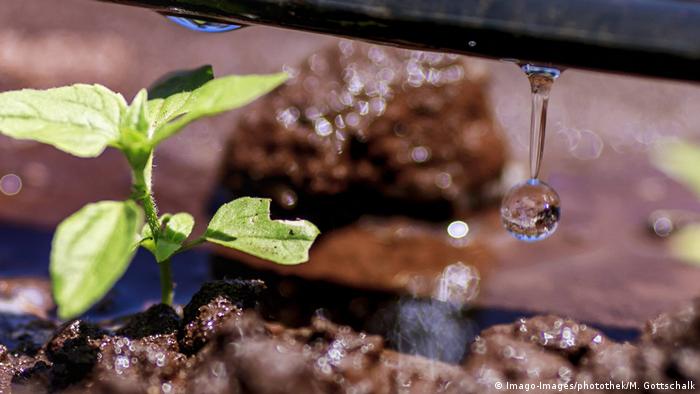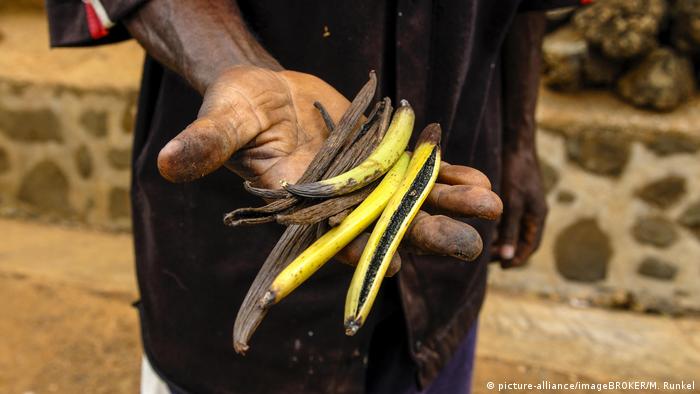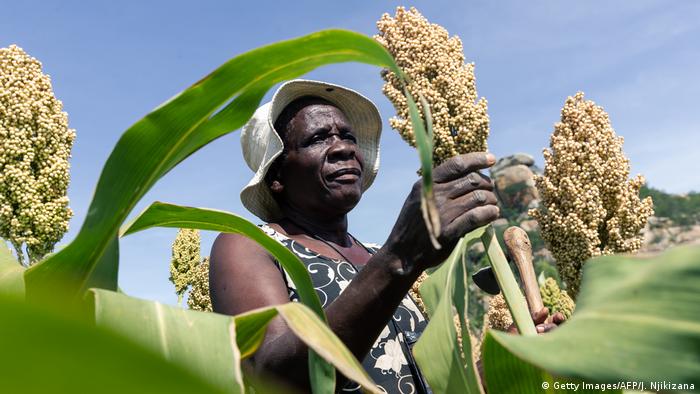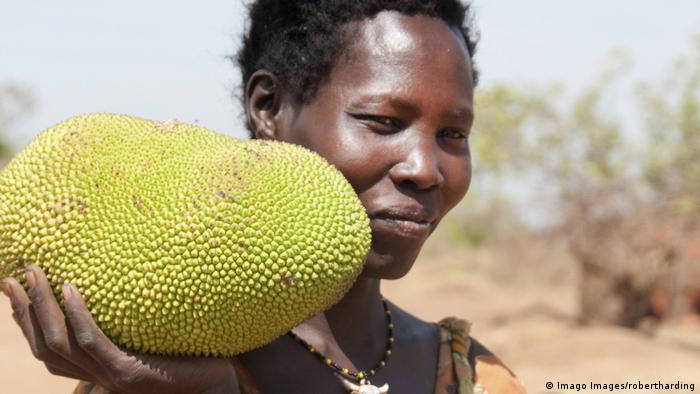As hurricane Idai devastated last year, the southern part of Africa, many people lost their whole existence. The number of such natural disasters is expected to increase. New insurance policies are to alleviate the Hardship then.
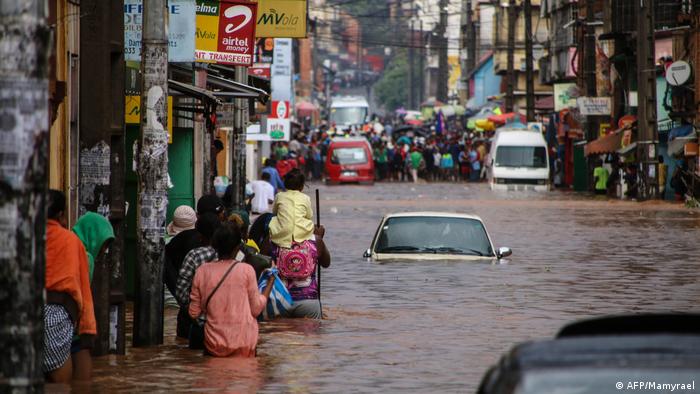
Antananarivo at the beginning of the year: Heavy rains resulted in Madagascar for Flooding
Once Peter Mutisi in the city of Kopa in Zimbabwe, several grocery stores and a company for sound systems. A year ago, he lost everything: his wife, his house, his possessions. Blame tropical storm Idai was in March 2019, large parts of southern Africa devastated, But a compensation for his losses, he had never received, says Mutisi of the Deutsche Welle: “We had insurance for the car. I once asked about it, but they said that was for natural disasters.”
Thus damage caused by natural disasters can be intercepted for Affected like Peter Mutisi better, has launched the African Union in 2014, the African Risk Capacity in life. The builds on two pillars: an Agency, the States, helps to be better prepared for disasters, and an insurance branch.
With models against Hunger
Currently, there is only insurance against droughts. Unlike other insurers, the ARC offers so-called Index insurance. “We don’t have to go to the field and see how big the damage to the fruits or the loss of the harvest,” explains Malvern Chirume, insurance expert at African Risk Capacity Limited in South Africa.

It is too dry: The second season in a row lie fallow, these fields in the case of Zvishavane in Zimbabwe
The insurance is based on models that take into account many factors – such as rainfall and soil quality. They are created for each country and even individual regions. The ARC can detect whether a drought and, thus, crop failure in the making. Before meets specified conditions, for example, when an amount of precipitation in a certain period of time is lower than agreed, they will trigger a payout.
Money or relief goods to arrive so quickly which you need. The longer the time between harvest failures and help elapses, the greater the damage is. “People who make agriculture their livelihood, are then avoided on negative mechanisms, by they have sold their livestock or other items of value, to be able to afford food. Or you take your children out of school,” said Chirume.
‘Good concept’
Debbie Hillier leads the consulting company Oxford Policy Management Evaluation of the ARC, which is set to run for ten years. The concept is referred to as a “really good”. “African Risk Capacity is a very ambitious program. It is the first of its kind in the world,” said Hillier of the DW. Still your opinion, is it too early to be able to the effect of ARC properly measure. Especially in the area of advising governments on disasters to prepare for, had done but a lot of
Watch the Video 02:36 Share
Ethiopia: drought in the Horn of Africa
Facebook Twitter google+ send Tumblr VZ Xing Newsvine Digg
Permalink https://p.dw.com/p/3Rz8E
Ethiopia: drought in the Horn of Africa
.
Individuals such as Peter Mutisi of the Zimbabwe cannot assure you, however, in the case of the ARC. The only States. Recently, ARC has been testing the so-called Replica-insurance. Here, the state has not paid the insurance contribution, but partners such as the world food program. New is also that the African Development Bank can subsidize the contributions of individual States.
Currently have secured eleven of the States in the ARC against drought, mainly West African countries. In 2014, as the first contracts were offered, there were only four. A total of 61 million dollars have been paid out since then – in Niger, Mauritania, Malawi, Senegal and the ivory coast.
Insurance professional Chirume considers it problematic that countries insure each growing period and not continuously. But he has this understanding: “Some States will have to decide whether you build a hospital or a drought insurance,” said Chirume.
There are already plans, insurance against other disasters, such as Floods, epidemics and hurricanes to offer. Chirume hopes that insurance companies can go up against the cyclones at the end of this year, at the Start. Deposits will be in the event of damage in two, at least three days paid.
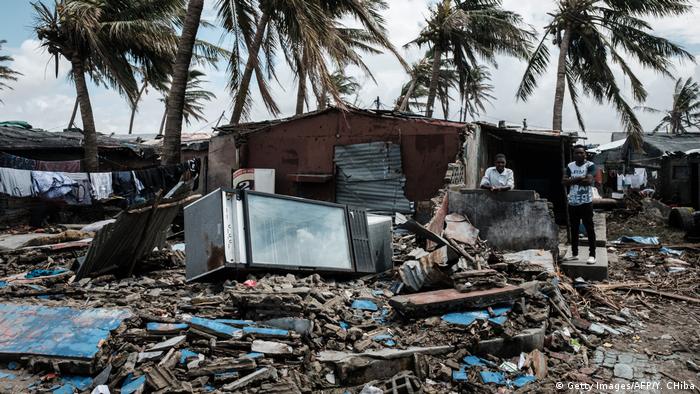
Mozambique a year ago: cyclone Idai has this destroyed Bar completely
The offer to extend is urgently needed – the devastating hurricanes, Idai and Kenneth have shown it to 2019. This is also evident when you look at the Index for malicious vulnerability due to natural hazards of the British consulting company Verisk maplecroft. It is a measure of how far States are able to adapt to natural hazards to prepare and to be with the impact.
More vulnerable to disasters
Malawi, Mozambique and Zimbabwe, three of the countries that were affected by the Storms in the past year particularly difficult. In the Ranking, they all fall in the group of States that are exposed to a high risk. Mozambique in the second quarter of 2019 from 194 countries on space nine.” Mozambique is compared to other States, particularly in the health system and the access to funds and disaster relief,” says Niall Smith, of Verisk Maplecroft. For comparison: in Germany, occupied in the same period, space 164, the harmful vulnerability was low.
Smith speaks to another point: The economy is dependent in many African countries on agriculture. The make them very susceptible to failures due to climate change and natural disasters.
Video 06 view:07 Share
Morocco: insurance against storm and drought
Facebook Twitter google+ send Tumblr VZ Xing Newsvine Digg
Permalink https://p.dw.com/p/2zx77
Morocco: insurance against storm and drought
To have no insurance, or not the right, that is the rule in Africa in the event of disasters rather than the exception Malvern Chirume declared, of the ARC. That would be a lack of awareness that one should hedge against the possibility of damages. But also the distrust of many people: In the past, some insurers would not want to pay in case of damage. And thirdly, it was a matter of money: “The Per capita income of the average person on the continent is quite low. Therefore, insurance is seen as a luxury.”
It was not, however. “If anything happens to me, I’ll be involved in an accident or for whatever reason can’t work, I need to know that for my family or my quality of life is taken care of,” said Chirume. When disaster strikes, but the main earner of the family could have a Situation with far-reaching consequences, because children can go to school.
For Peter Mutisi in Zimbabwe, the further developments of the ARC and in the area of insurance in Africa but it’s too late. He now lives in one of the small grocery stores, which he operated before the storm. As the Deutsche Welle spoke with him, threatened him with expulsion. The owner had increased the rent. The can no longer afford Mutisi now. “Governments should create a few laws to be able to such problems in the future, deal with it,” he says.
Employees: Privilege Musvanhiri
